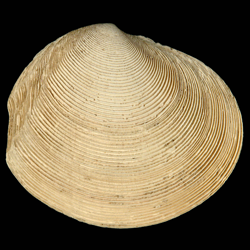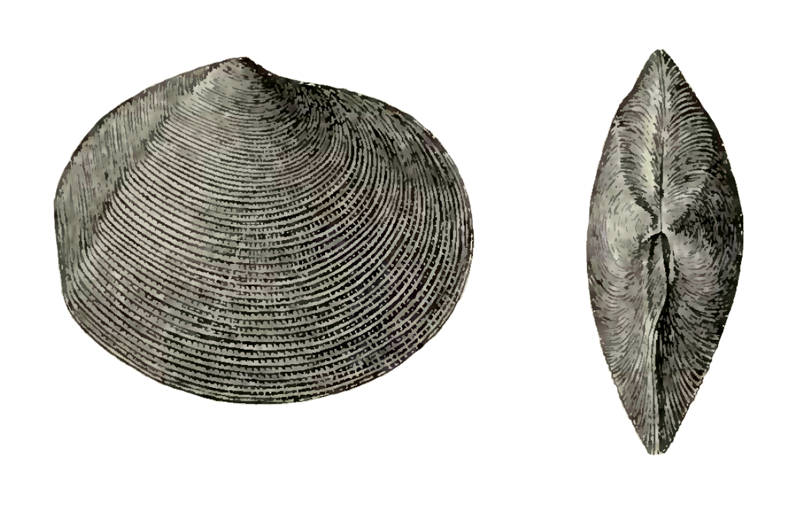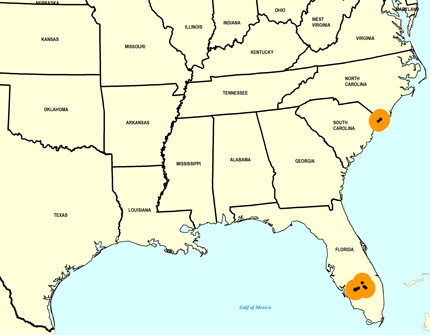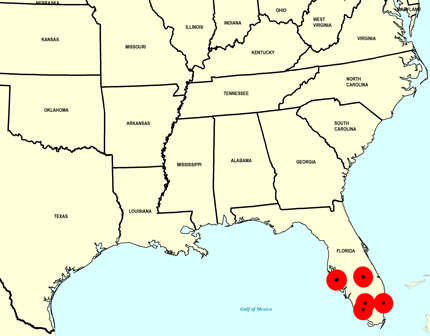
Semele leana

- Phylum: Mollusca
- Class: Bivalvia
- Order: Imparidentia
- Family: Semelidae
- Genus: Semele
- Species: Semele leana (Dall, 1892)
Geological Range
Late Pliocene to Early Pleistocene; Extinct.
Paleogeographic Distribution
Southern Florida to North Carolina.
Remarks
This species was originally named by Dall (1892) without a written description or figure.
Original Description (from Dall, 1898, p. 992):
"Pliocene of the Caloosahatchie River and Shell Creek, Florida; Ball and Willcox.
Shell large, moderately inflated, somewhat inequilateral, the anterior end longer, nearly equivalve; anterior end evenly rounded, base evenly arcuate, posterior end blunt, subtruncate, short; lunule narrow, longer on the left valve, the right valve-margin encroaching on the hinge-line in the lunular region; sculpture of feeble, flattened, small radial threads and numerous evenly distributed, rather high, concentric lamellae, those on the posterior dorsal areas lower and forming an obtuse angle where they pass on to the disk; the edges of the lamellae are more or less minutely crenulated by the radial sculpture; hinge normal, pit rather large, pallial sinus large, rounded, ascending, free from the pallial line except at junction. Lon. of average specimen 54, alt. 44, diam. 18 mm. An exceptionally large valve measures Ion. 63, alt. 52, diam. (double) 22 mm.
This extremely fine shell is of the same general type as S. perlamellosa, but of different outline and proportions, as the figures show very well. It is one of the most characteristic shells of the Florida Pliocene and is not exactly represented by any of the recent species of the coast so far discovered. It is named in honor of the late Dr. Isaac Lea, one of the earliest, most careful and thorough workers on our Tertiary Paleontology."
To access this description in its original formatting through Google Books, click here.
Stratigraphic Occurrences
- Early Pleistocene
- Caloosahatchee Formation (S. FL)
- Waccamaw Formation (SC, NC)
- Late Pliocene
- Tamiami Formation (Ochopee Limestone) (S. FL)
- Tamiami Formation (Pinecrest Beds) (S. FL)



